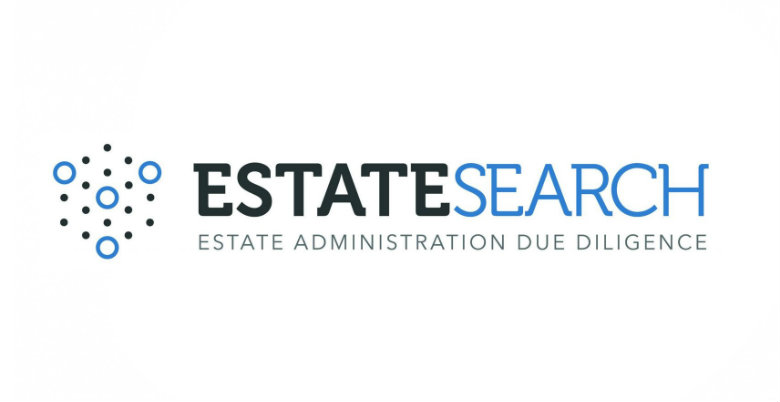Estatesearch is a legal technology provider and has been pioneering new data and technology to help private practitioners identify assets and liabilities since 2018. Through its secure portal, Estatesearch also offers ID and insolvency checks to satisfy AML regulations and meet recommendations when it comes to checking if beneficiaries are bankrupt prior to distribution of estate funds. We spoke to Ben Furlong, Managing Director at Estatesearch to find out more.
- What challenges do legal firms face in relation to the risk of probate fraud?
From diversion of funds from beneficiaries by a less than honest executor, to firms incorrectly identifying the financial status of the beneficiary, The Society of Trust and Estate practitioners (STEP) has previously estimated that the cost of probate fraud could be in the region at £150 million. However, with increasing online use, this figure is likely to increase dramatically.
With the Solicitors Regulatory Authority confirming probate matters fall in scope of Anit-Money Laundering (AML) legislation, firms are required to undertake a risk assessment, maintain a written policy and implement suitable controls to mitigate against risks. In short, firms need to ensure that that all parties involved in a financial transaction are who they say they are, and should implement suitable identity verification procedures. This is especially pertinent for beneficiaries, who often won’t be onboarded in the same way as the executor. Solicitors also need to check that there are no issues like insolvency or bankruptcy that could cause a risk to the law firm prior to distributing funds to these persons.
- How can firms maintain compliance in relation to ID checks?
The Legal Sector Affinity Group (LSAG), has developed anti-money laundering (AML) guidance for the legal sector with practical steps to help firms ensure regulatory compliance which clarifies what is meant by identification and verification.
- Identification of a client or a beneficial owner is simply being told or otherwise coming to know a client’s identifying details, such as their name or address.
- Verification is obtaining evidence which supports this claim of identity.
Identification should never be relied upon without some form of verification, which should include information from a ‘reliable source, independent of the client’. This can include:
- Driver’s license
- Passport
- Bank statements, utility bills etc
The original document should be viewed, however in some cases copies may suffice but these should be certified for a higher level of confidence.
When it comes to probate practices specifically, LSAG Guidance 6.14.16 states:
“When acting for the executor(s) or administrators of an estate, you should establish their identity using the procedures for natural persons or companies set out above. When acting for more than one executor or administrator, you should verify the identity of at least two of them. You should also get copies of the death certificate, grant of probate and any letters of administration. If a will trust is created, and the trustees are different from the executors, the procedures in relation to trusts will need to be followed when the will trust comes into operation.”
The LSAG guidance also states that where you are unable to meet the client face-to-face, geographical and jurisdictional risks should be considered. You will need to ascertain whether the client is considered a PEP (politically exposed person) or appears on the Sanctions list, both of which bring with them a higher level of risk.
- What checks should be made in relation to Bankruptcy?
Equally important to ID checks are bankruptcy/insolvency checks on each party involved in the matter. This ensures that funds tied up in the estate are not proceeds of crime in the first instance, but also that monies paid to beneficiaries are rightfully theirs and not owed to a creditor(s).
For example: if the client (Personal Representative) is Bankrupt – then money on the client account belongs to the Trustee in Bankruptcy (Insolvency Act 1986). If the deceased is bankrupt – the estate may not be sufficient to settle debts. If one or more beneficiaries are bankrupt and their legacy is paid to them, this could be deemed as a misadministration of the estate, as funds should have been paid to the Trustee in Bankruptcy. In this case the person responsible may remain liable.
- Compliance is an evolving challenge for legal firms, how can Estatesearch help?
We understand the complex challenges and obligations faced by legal teams, so we try to make life easy for our clients. That’s why we developed our ID & Pre-Distribution checks to provide an extra layer of protection for the law firm. Both the Probate Practitioners Handbook and the Law Society Bankrupt Beneficiaries practice note lay down recommendations for due diligence in pre-distribution checks, our approach ensures that these recommendations are met and provides the easiest way of checking the solvency and identity of a beneficiary or lay executor.
Checks are available through our one-stop-shop secure portal and are fully integrated into the Estatesearch case journey in our ordering platform, providing time saving and audit trail benefits.
Available at three levels of detail, and powered by Veriphy, the multi-award-winning AML & Compliance experts, our ID checks ensure regulatory compliance and provide firms with robust solutions to protect the interests of client and the reputation of the law firm.
If you would like to find out more about how we can help, contact us on helpdesk@estatesearch.co.uk or request a demonstration meeting here.
This article was submitted to be published by Estatesearch as part of their advertising agreement with Today’s Wills and Probate. The views expressed in this article are those of the submitter and not those of Today’s Wills and Probate.



















